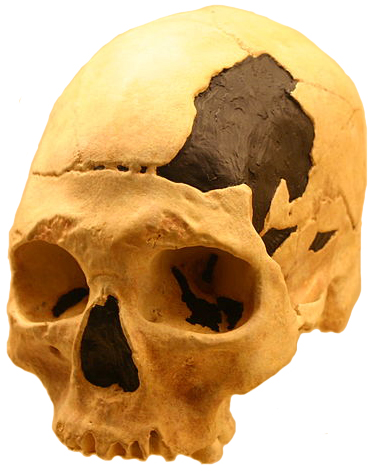
For more information, click here. Or, Try these sources:
- Trinkaus, E., Milota, Ș., Rodrigo, R., Gherase, M., Moldovan, O. (2003), Early Modern Human Cranial remains from the Peștera cu Oase, Romania, Journal of Human Evolution, 45:245 –253.
- Wilford, John Noble (2 Nov 2011). "Fossil Teeth Put Humans in Europe Earlier Than Thought". New York Times. Can be read here.
While "Oase 1" lower jaw is fully mature, the facial skeleton is that of a mid-second-decade adolescent, therefore corresponding to a second individual, designated as "Oase 2". Further analyses have revealed that the left temporal bone represents a third individual, assessed as adolescent versus mature female, designated as "Oase 3". However, additional finds and work have shown that the temporal bone derives from the same cranium as the "Oase 2" facial and parietal bones. The lack of archaeological signs such as torches, charcoal or tools could suggest that the human remains may have washed in the cave through fissures. The "Oase 2" and "Oase 3" confirm a pattern already known from the probably contemporaneous "Oase 1" mandible, indicating a mixture of archaic, early modern human and Neanderthal morphological features. Thus, the specimens exhibit a suite of derived "modern human" features like projecting chin, no brow ridge, a high and rounded brain case. Yet, these features are associated with several archaic aspects of the cranium and dentition that place them outside the range of variation for modern humans, like a large face, a large crest of bone behind the ear and big teeth that get even larger toward the back. This mosaic of Neanderthal and modern human resembles similar traits found in a 25,000 years old fossil of a child in Abrigo do Lagar Velho or in the 31,000 years old site of Mladeč, by Cidália Duarte, et al. (1999).
- Zilhão, J. (2006). "Neandertals and Moderns Mixed and It Matters". Evolutionary Anthropology. 15 (5): 183–195. Can be read here.